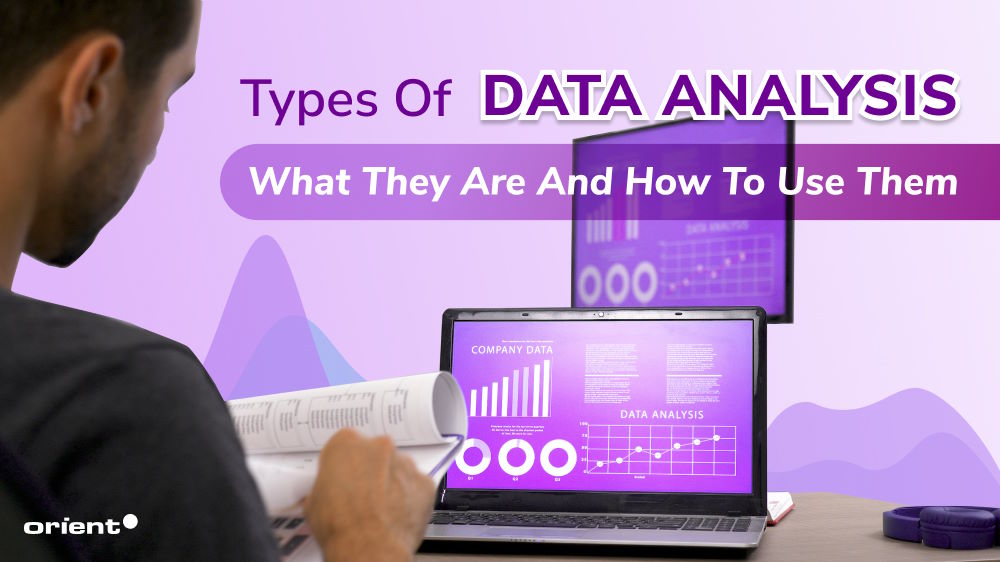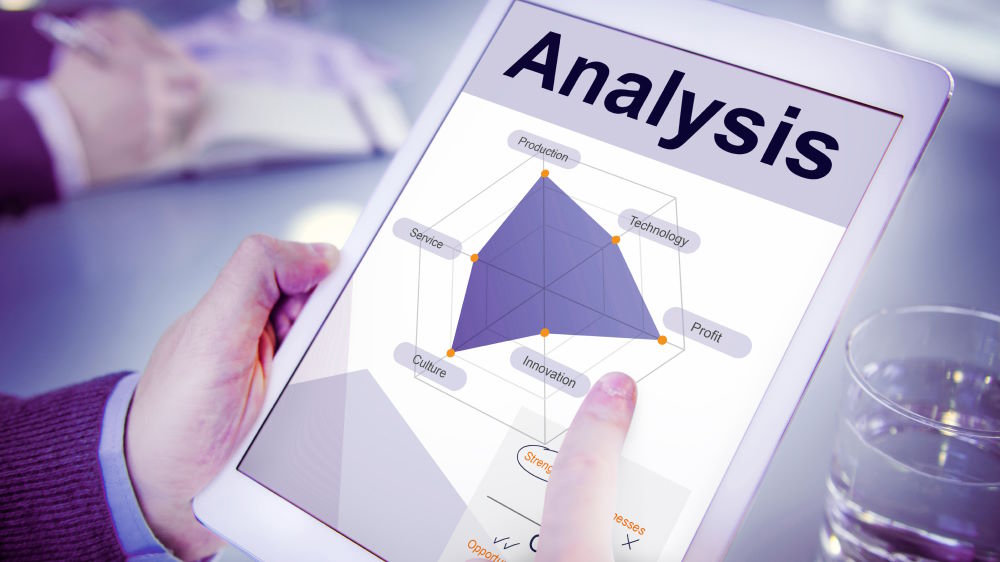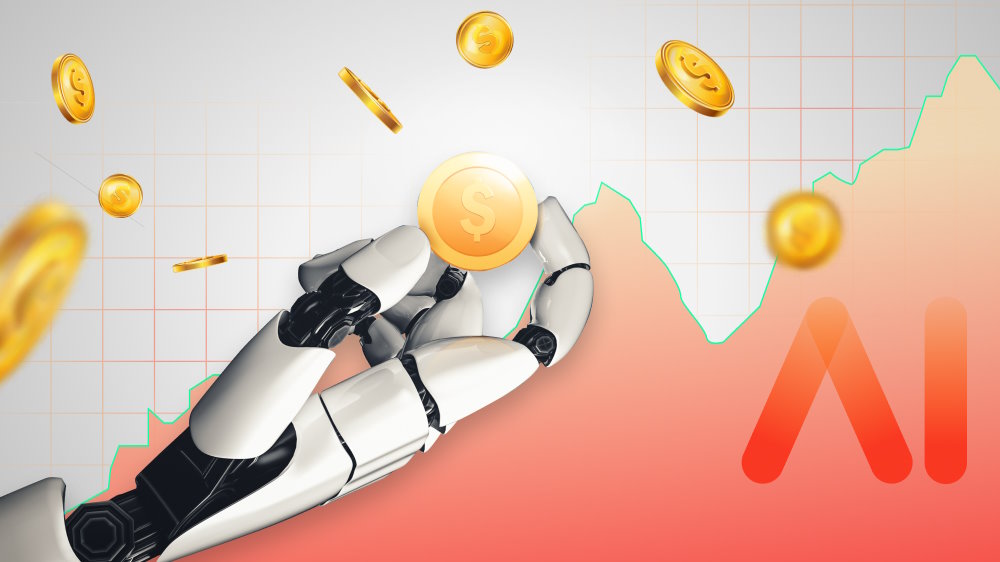Types of Data Analysis: What They Are and How to Use Them

Content Map
More chaptersData is everywhere. From retail to e-commerce, from health care to digital marketing, and from business to government, data is collected, generated, and analyzed at an unprecedented scale and speed. Data analysis is the process of transforming raw data into meaningful insights that can help us make better decisions, solve problems, and improve performance. However, not all data analysis is the same. Depending on the purpose and the context, different types of data analysis can be applied to answer different questions and achieve different goals.
In this article, we will explore the four primary types of data analysis: descriptive, diagnostic, predictive, and prescriptive. We will define what each type of data analysis is, how it works, and what it can do. We will also provide some examples of how each type of data analysis is used in various domains and scenarios. By the end of this article, you will have a clear understanding of the types of data analysis methods and how to use them effectively.
Descriptive Analysis

Descriptive analysis is a type of data analysis process that focuses on summarizing and describing what has occurred in the past. It provides a simple yet powerful way to gain insights into historical data and understand key trends and patterns. By examining and organizing data in a meaningful way, descriptive analysis offers a snapshot of the past and helps to identify significant aspects of a dataset. Exploratory data analysis (EDA) plays a central role in descriptive analysis by facilitating the initial exploration and understanding of the data. EDA involves tasks such as data visualization, summary statistics, and data profiling.
Examples of tools commonly used for descriptive analysis:
- Google Analytics enables website owners to track and analyze data, including website traffic, user behavior, and conversion rates, providing valuable insights into the performance of online platforms.
- HubSpot offers data analytics features that help businesses monitor marketing campaigns, customer data, and sales data, thereby assisting in understanding past performance and making data-driven decisions.
- Similarly, during the COVID-19 pandemic, descriptive analytics of statistics helped governments and health organizations track the spread of the virus, monitor infection rates, and assess the impact of measures taken.
Benefits of Descriptive Analysis
- Summarizes and Simplifies Complex Data: Descriptive analysis provides a concise summary of data, making it easier to understand and interpret.
- Identifies Patterns and Trends: By analyzing data using descriptive techniques, patterns, and trends can be identified, helping to inform decision-making and strategy development.
- Communicates Insights Effectively: Descriptive analysis employs visual representations, making it easier for businesses to communicate findings to stakeholders and non-technical audiences.
- Provides a Foundation for Further Analysis: Descriptive analysis serves as a preliminary step before more advanced statistical analyses, providing a foundation for more in-depth exploration.
Limitations of Descriptive Analysis
- Descriptive Analysis Alone Does Not Explain Causality: While descriptive analysis can highlight relationships and patterns, it does not provide explanations for the reasons behind observed patterns or predict future outcomes.
- Lack of Predictive Power: Descriptive analysis focuses on historical data and does not provide predictions or forecasts for future trends or outcomes.
- Limited Insights Beyond Summary Statistics: Descriptive analysis focuses on summarizing data and may not capture the full complexity or nuances of the dataset.
- Susceptible to Bias: Descriptive analysis relies on the quality and representativeness of the data, and if the data is incomplete or biased, it can affect the accuracy of the analysis.
Diagnostic Analysis

Diagnostic analysis is a crucial type of data analysis that delves into the exploration of why specific events or outcomes occurred. By examining patterns and relationships within data, diagnostic analysis seeks to uncover the underlying causes and effects that contribute to certain phenomena.
Examples of Diagnostic Analysis:
- Root Cause Analysis is a diagnostic technique used to identify the fundamental reason behind a problem or an event. It involves analyzing data to trace back to the primary cause that led to an issue, enabling organizations to address the root cause rather than merely treating symptoms.
- Correlation Analysis is employed to uncover relationships between variables in a dataset. It helps identify whether and to what extent changes in one variable correspond to changes in another. By identifying correlations, organizations can gain insights into how different factors influence each other.
- Segmentation Analysis involves dividing a dataset into distinct groups based on specific characteristics or criteria. This allows organizations to identify differences and patterns among different segments, aiding in targeted decision-making and customized strategies.
Benefits of Diagnostic Analysis
- Revealing Causes and Effects: Diagnostic analysis enables organizations to understand the reasons behind specific outcomes or occurrences. Identifying patterns and relationships in data sheds light on the factors that contributed to a particular event, providing valuable insights.
- Informed Decision-Making: Through diagnostic analytics, organizations can make more informed decisions by understanding the underlying causes and effects. This knowledge helps stakeholders develop effective strategies, allocate resources appropriately, and mitigate risks.
Limitations of Diagnostic Analysis
- Lack of Future Predictability: Diagnostic analysis focuses on explaining past events rather than predicting future outcomes. While it uncovers valuable insights into past occurrences, it does not provide a crystal ball for forecasting future events.
- Contextual Factors: Diagnostic analysis might not account for contextual factors or external that can influence the observed patterns and relationships. It is essential to consider additional information and expert knowledge to gain a comprehensive understanding of the analyzed data.
Predictive Analysis

Predictive analysis is a powerful data analysis technique that leverages historical and current data to forecast future events, trends, and outcomes. By applying various statistical and machine learning models, predictive analysis enables organizations to make informed decisions and take proactive actions based on anticipated future scenarios.
Examples of Predictive Analysis:
- Machine Learning algorithms are extensively used in predictive analysis. These algorithms learn from historical data patterns and use them to make predictions on new, unseen data. Examples include classification models, such as decision trees or support vector machines, and regression models, which estimate numerical values based on input variables.
- Regression Analysis is a statistical technique used to identify relationships between variables and predict future outcomes. It helps quantify the impact of independent variables on a dependent variable, enabling organizations to forecast trends or estimate future values.
- Sentiment Analysis uses text data mining techniques and natural language processing to analyze and classify subjective information from sources such as social media, customer reviews, or surveys. By understanding the sentiment expressed, organizations can predict customer satisfaction levels, market trends, or brand reputation.
Benefits of Predictive Analysis
- Anticipating Future Trends: Predictive analysis empowers businesses to anticipate behaviors and future trends based on historical and current data. By identifying patterns and relationships, they can make proactive decisions and seize opportunities before they arise.
- Improved Decision-Making: Predictive analysis provides insights that aid in making informed decisions. By quantifying potential outcomes and assessing their probabilities, organizations can prioritize resources, optimize strategies, and mitigate risks.
Limitations of Predictive Analysis
- Accuracy and Uncertainty: While predictive analytics provides valuable insights, it does not guarantee absolute accuracy. Predictions are based on historical and current data and uncertainties or unforeseen factors can impact the accuracy of forecasts.
- Causality versus Correlation: Predictive analysis focuses on identifying correlations between variables without directly establishing causality. It is crucial to interpret predictions within the context of the analysis and consider other factors that may influence the anticipated outcomes.
Prescriptive Analysis
Prescriptive analysis is a sophisticated type of data analysis that goes beyond predicting the future and instead recommends specific actions to achieve desired goals or optimize a situation. By leveraging advanced algorithms and mathematical models, prescriptive analytics provides actionable insights to guide decision-making and maximize outcomes.
Examples of Prescriptive Analysis:
- Optimization Models are widely used in prescriptive analysis to identify the best possible solutions for complex problems. These models consider various constraints and objectives to recommend the optimal allocation of resources, scheduling, or production plans.
- Decision Trees are a graphical representation of decision-making processes that help determine the best course of action based on different scenarios and potential outcomes. Prescriptive analysis utilizing decision trees offers a framework for making informed decisions by considering factors and their associated probabilities.
- Simulation Models create virtual representations of real-world systems or processes to understand their behavior and test different scenarios. Prescriptive analysis employing simulation models allows decision-makers to explore the impacts of various actions and make informed choices to optimize performance.
Benefits of Prescriptive Analysis
- Actionable Solutions: Prescriptive analysis provides specific recommendations and actionable insights to guide decision-making. It helps organizations identify the most effective actions to achieve desired goals or optimize outcomes, leading to improved performance and efficiency.
- Optimized Results: By considering constraints, objectives, and multiple variables, prescriptive analysis helps organizations identify optimal solutions. It aids in resource allocation, process optimization, and strategic planning, leading to improved productivity and profitability.
Limitations of Prescriptive Analysis
- Complex Data and Algorithms: Prescriptive analysis requires extensive and high-quality data, often from various sources, to generate accurate insights. Implementing the algorithms and models involved can be complex and may require specialized expertise and resources.
- Costly Implementation: The implementation of prescriptive analysis can be costly, both in terms of data collection and analysis. Organizations need to invest in technology, infrastructure, and skilled personnel to leverage prescriptive analysis techniques effectively.
How to Use Different Types of Data Analysis
Data analysis has become a critical function for businesses seeking insights from their data. However, with different types of analysis available, it’s important to understand which technique aligns best with your objectives.
When embarking on a data analysis endeavor, it is crucial to identify the most suitable type of data analysis for your specific objectives. Consider whether you need descriptive analysis to summarize and understand the data, diagnostic analysis to investigate causes and relationships, predictive analysis to make future predictions or prescriptive analysis to guide optimal actions. Aligning the type of analysis with your objectives ensures that you extract the most relevant insights from your data.
Below are steps to effectively implement each type of data analysis:
- 1. Descriptive Analysis: To start, explore, and summarize the data by using techniques such as data visualization and summary statistics. The goal is to identify key patterns, trends, and distributions within the data to gain a comprehensive understanding.
- 2. Diagnostic Analysis: The next step is to dive deeper into the data to investigate relationships, causes, and potential correlations. Effective diagnostic analysis utilizes statistical tests, hypothesis testing, and regression analysis to identify factors influencing outcomes and uncover underlying root causes.
- 3. Predictive Analysis: Next, build predictive models using techniques like regression, time series analysis, or machine learning algorithms. It is important to train the models on historical data and validate their performance using appropriate evaluation metrics. Then, use the models to make future predictions or forecasts by making data-driven projections of outcomes.
- 4. Prescriptive Analysis: The final step involves employing optimization models, decision trees, or simulation models to recommend optimal actions or strategies. Consider constraints, objectives, and multiple variables to effectively guide decision-making and maximize desired outcomes. Take into account operational tradeoffs to provide prescriptive recommendations.
Need Some Help?
Understanding the different types of data analysis is critical but can still be confusing when trying to implement it yourself. If you find yourself unsure about which technique is best for your business needs or need expert guidance in any part of the analysis process, consider partnering with Orient Software.
As a dedicated data analysis outsourcing firm, we have deep experience in all forms of analytical project execution, from definition to deployment. Our team of professional data scientists and consultants can advise on the right approach, prepare and analyze your datasets, build predictive or prescriptive models, and interpret results to deliver clear, actionable insights.
Orient Software also helps with application management so you can continuously optimize analytical solutions over time. Whether you need assistance with a one-off project or an ongoing partner to support advanced capabilities, Orient Software’s reliable analytics services can help you leverage the power of data to drive better outcomes for your organization.







